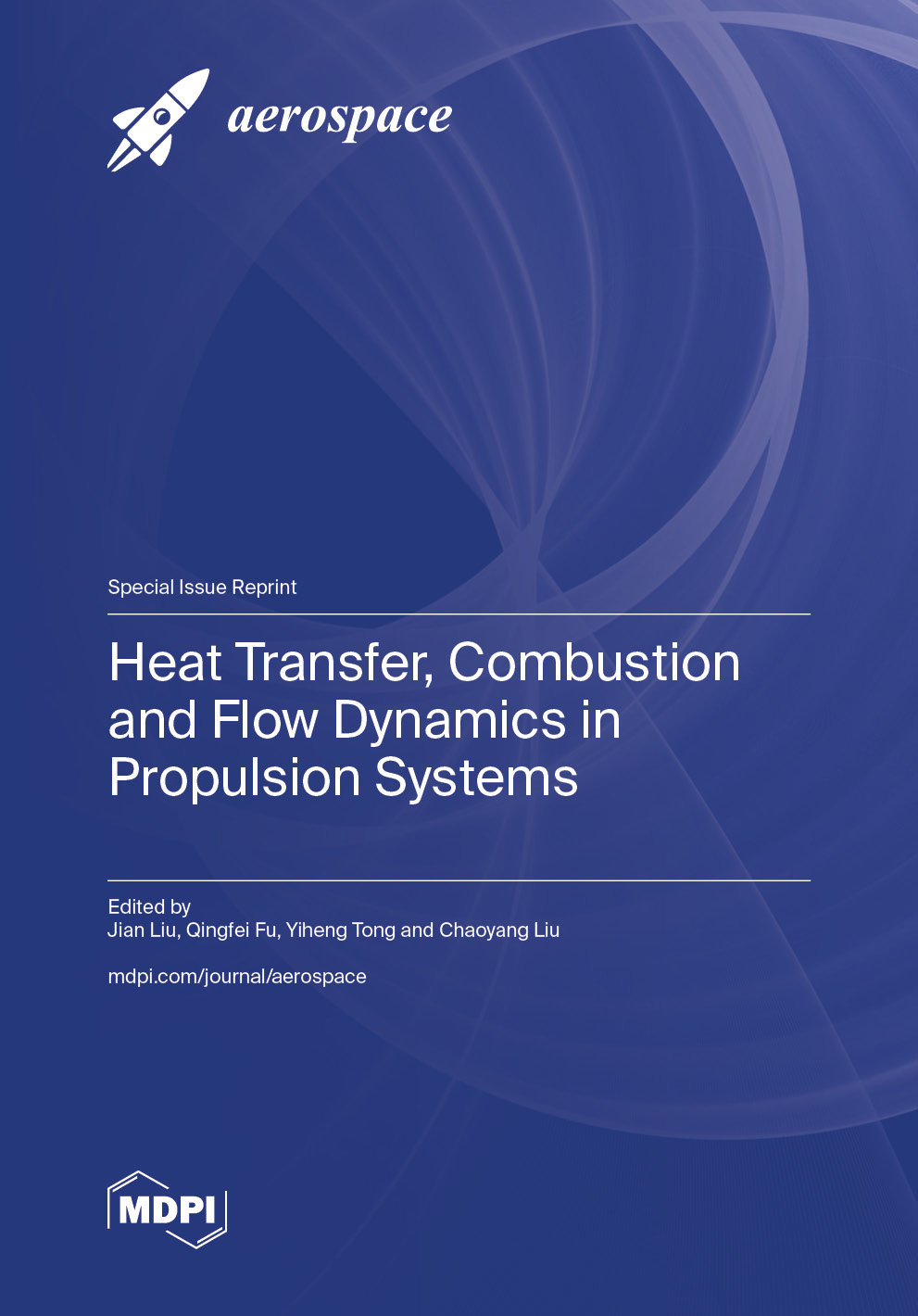Heat Transfer, Combustion and Flow Dynamics in Propulsion Systems
A special issue of Aerospace (ISSN 2226-4310).
Deadline for manuscript submissions: closed (31 August 2023) | Viewed by 16286
Special Issue Editors
Interests: gas turbine; convective heat transfer; film cooling; transpiration cooling; scramjet; powder fuel; porous media; combustion; PIV; experimental heat transfer
Special Issues, Collections and Topics in MDPI journals
Interests: liquid rocket; scramjet; combustion; PLIF
Interests: combustion instability and spray dynamics related to gas turbine and liquid rocket engines
Special Issues, Collections and Topics in MDPI journals
Interests: supersonic flow and combustion
Special Issues, Collections and Topics in MDPI journals
Special Issue Information
Dear Colleagues,
Propulsion systems based on chemical reaction principles are still the most widely used thrust devices for aircrafts, drawing a lot of research attention. Whether in traditional propulsion systems including aero-engines, rocket engines, ramjets and scramjets, or new developed combined power systems (such as TBCCs and RBCCs), thermal protection, flow dynamics and combustion instabilities in engine systems are still major concerns, especially for high-speed aircraft. Thermal protection has become the biggest issue for hypersonic aircraft experiencing extremely high external aerodynamic heating and internal combustion heat release. Another challenging issue is the risk of combustion instability inside some propulsion systems, which couples with an unsteady heat release process and leads to high thermal load. Research on advanced thermal structure designs, flow control and combustion is significant to ensure high efficiency and safe operation for advanced propulsion systems.
Some optimized or novel design, analysis and simulated methods have been applied to the structural design, heat transfer and flow dynamics of propulsion systems, such as flow–heat–stress coupled analysis and multimodal coupled analysis. New measurement methods have been proposed to realize clear and accurate visualizations of flow field and combustion products, such as high-resolution PIV and burst-mode high frequency LIF. In addition, new concepts have been proposed aiming at improving the efficiency of propulsion systems, such as the application of powder fuel instead of traditional fuels and the application of supercritical fluids and nanofluids in thermal management systems. Associated with these new concepts, related technologies, such as powder fluidization and heat transfer enhancement in two-phased nanofluids, have also been developed for applications in aerospace fields.
This Special Issue is focused on bringing together innovative developments in heat transfer, structural design, combustion and flow dynamics within the applications of advanced propulsion systems, including original research and review articles.
Potential topics include, but are not limited to:
- Heat transfer enhancement
- Turbulent combustion
- Supersonic flow
- Supercritical fluid heat transfer
- Laser-based combustion diagnostics
- Spray dynamics
- Nanofluid heat transfer
- Blade cooling
- Transpiration cooling
- Multiphase flow
- Thermal Management
- Regenerative cooling
- Aerodynamics
- Combustion instability
- Power fuel fluidization
- Structural design of an engine
- Thermal stress analysis
Dr. Jian Liu
Dr. Qingfei Fu
Dr. Yiheng Tong
Dr. Chaoyang Liu
Guest Editors
Manuscript Submission Information
Manuscripts should be submitted online at www.mdpi.com by registering and logging in to this website. Once you are registered, click here to go to the submission form. Manuscripts can be submitted until the deadline. All submissions that pass pre-check are peer-reviewed. Accepted papers will be published continuously in the journal (as soon as accepted) and will be listed together on the special issue website. Research articles, review articles as well as short communications are invited. For planned papers, a title and short abstract (about 100 words) can be sent to the Editorial Office for announcement on this website.
Submitted manuscripts should not have been published previously, nor be under consideration for publication elsewhere (except conference proceedings papers). All manuscripts are thoroughly refereed through a single-blind peer-review process. A guide for authors and other relevant information for submission of manuscripts is available on the Instructions for Authors page. Aerospace is an international peer-reviewed open access monthly journal published by MDPI.
Please visit the Instructions for Authors page before submitting a manuscript. The Article Processing Charge (APC) for publication in this open access journal is 2400 CHF (Swiss Francs). Submitted papers should be well formatted and use good English. Authors may use MDPI's English editing service prior to publication or during author revisions.








